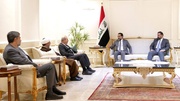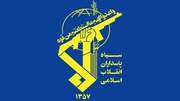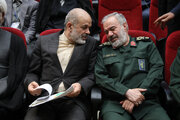His Arabic name in full was Ghiyath al-Din Abu al-Fath Umar ibn Ibrahim al-Nisaburi al-Khayyam.
The Persian mathematician, astronomer, and poet was renowned in his own country and time for his scientific achievements but Khayyam is chiefly known to English-speaking readers through the translation of a collection of his robaiyat (“quatrains”) in “The Rubaiyat of Omar Khayyam” (1859) by the English writer Edward FitzGerald.
His name Khayyam (“Tentmaker”) may have been derived from his father's trade. He received a good education in the sciences and philosophy in his native Neishabur before traveling to
He made such a name for himself that the Seljuk sultan Malik-Shah invited him to
His years in
Omar's poems had attracted comparatively little attention until they inspired FitzGerald to write his celebrated The Rubaiyat of Omar Khayyam, containing such now-famous phrases as “A Jug of Wine, a Loaf of Bread -- and Thou,” “Take the Cash, and let the Credit go,” and “The Flower that once has blown forever dies.” These quatrains have been translated into almost every major language and are largely responsible for coloring European ideas about Persian poetry. Some scholars have doubted that Omar wrote poetry. His contemporaries took no notice of his verse, and not until two centuries after his death did a few quatrains appear under his name. Even then, the verses were mostly used as quotations against particular views ostensibly held by Omar, leading some scholars to suspect that they may have been invented and attributed to Omar because of his scholarly reputation.
Each of Omar's quatrains forms a complete poem in itself. It was FitzGerald who conceived the idea of combining a series of these robaiyat into a continuous elegy that had an intellectual unity and consistency. FitzGerald's ingenious and felicitous paraphrasing gave his translations a memorable verve and succinctness. They are, however, extremely free translations, and more recently several more faithful renderings of the quatrains have been published.
The verses translated by FitzGerald and others reveal a man of deep thought, troubled by the questions of the nature of reality and the eternal, the impermanence and uncertainty of life, and man's relationship to God. The writer doubts the existence of divine providence and the afterlife, derides religious certainty, and feels keenly man's frailty and ignorance. Finding no acceptable answers to his perplexities, he chooses to put his faith instead in a joyful appreciation of the fleeting and sensuous beauties of the material world. The idyllic nature of the modest pleasures he celebrates, however, cannot dispel his honest and straightforward brooding over fundamental metaphysical questions.
(Encyclopaedia Britannica)

























Your Comment